Recreating the Overlook Hotel – a set decorator’s journey
The secluded Overlook Hotel in Kubrick’s The Shining is the embodiment of fear and fascination, and has etched itself into the brain of many a film fan. Following our article dissecting the design details of Room 237, let’s take a deeper dive into the faithful recreation of the entire Overlook Hotel for The Shining sequel Doctor Sleep.
Doctor Sleep (2019), directed by Mike Flanagan, is based on the 2013 horror novel of the same name by Stephen King, written as a sequel to his 1977 book The Shining. The Doctor Sleep film affirms that after Jack, Wendy and Danny Torrance’s fateful term at The Overlook, the hotel was closed down and left to rot, but the movie sees the return of the Hotel as the overarching antagonist.
Stanley Kubrick’s 1980 film was an adaptation of the novel The Shining but King was famously critical of Kubrick’s interpretation. However, Flanagan has said that his film Doctor Sleep “still acknowledge[s] Kubrick’s The Shining” because – while the film Doctor Sleep is a more direct adaptation of King’s sequel to his The Shining novel – “the Doctor Sleep movie exists very much in the same cinematic universe that Kubrick established in his adaptation of The Shining”.
This led Flanagan to faithfully recreate exact scenes from Kubrick’s The Shining to use in flashbacks as well as new scenes where Danny returns to the Overlook: “The Shining is so ubiquitous and has burned itself into the collective imagination of people who love cinema in a way that so few movies have. There’s no other language to tell that story in. If you say ‘Overlook Hotel,’ I see something. It lives right up in my brain because of Stanley Kubrick. You can’t pretend that isn’t the case” Flanagan said.
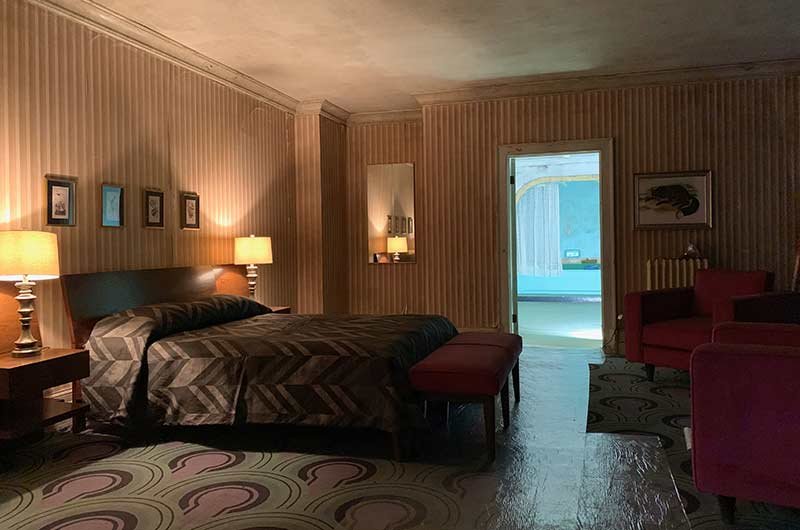
Recreating an icon
Film set decorator Gene Serdena had the incredible task of recreating the Overlook Hotel for Doctor Sleep so we’re pretty sure no one has studied this, one of the most famous hotels in film, in more detail than he. Serdena explained to us the thrills and challenges in bringing the hotel to life again. Take it away Gene…
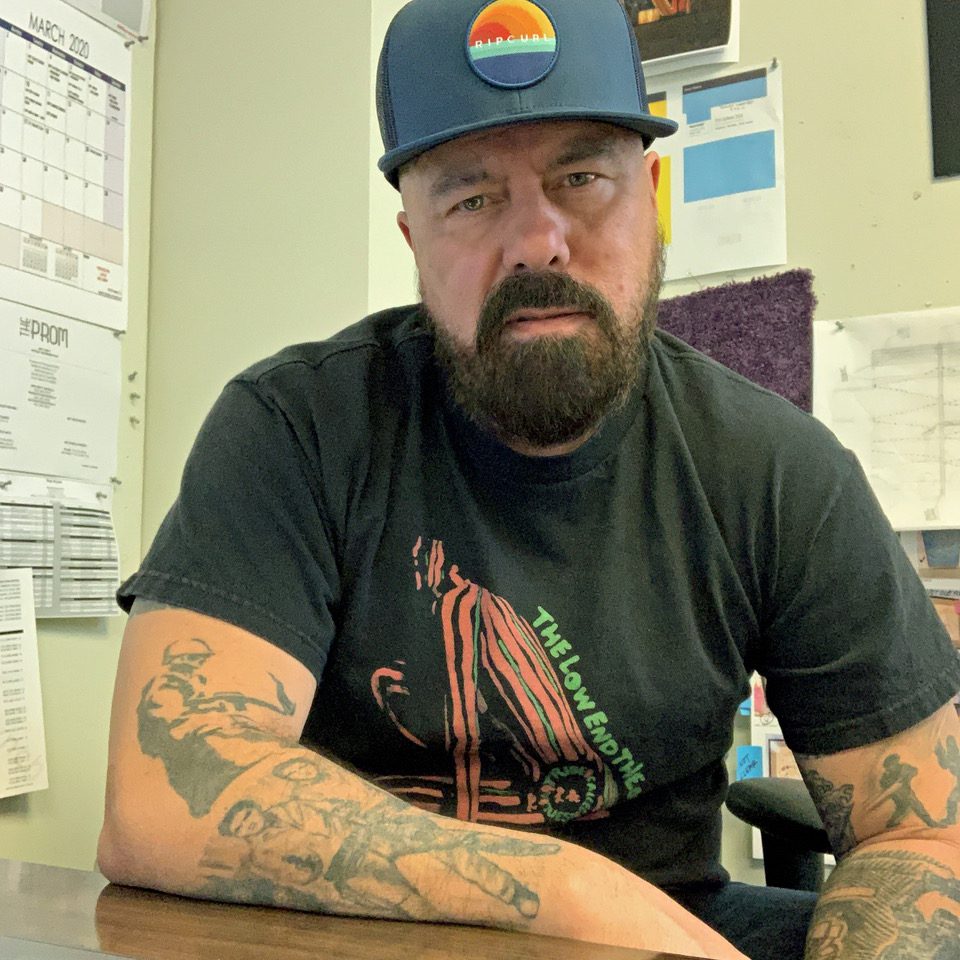
He began working in Set Decoration departments while still in college, and says “I’ve done this job exclusively my whole adult life”.
Gene Serdena: I’ve enjoyed a long collaboration with Production Designer, Maher Ahmad, who rang me about Doctor Sleep. He asked if I’d heard of it but as a longtime fan of both the book and film of The Shining, I told Maher I’d read the Stephen King sequel and enjoyed it so he asked if I’d be interested in traveling to Atlanta to make the film. Having read the novel and understanding that it necessarily deviated from the ending of The Shining film, I had one question: “Do we return to the Overlook Hotel?” “Yes,” he said. I simply replied “When do I start?”
I recall the Art Director, Austin Gorg, commenting that a set of construction drawings had been provided by an original draughtsman or art director from The Shining, but that upon careful viewing of the film, there were lapses in continuity — which suggested perhaps aspects of the sets were reconfigured to accommodate certain photographic shots.
-

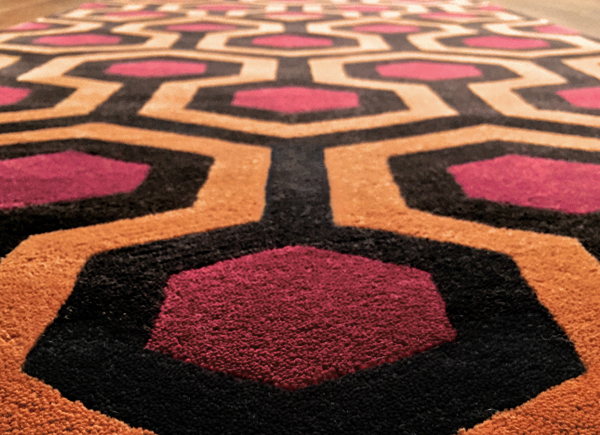
Hicks’ Hexagon officially licensed carpet, designed by David Hicks, as seen in The Shining Overlook Hotel
Designer: David Hicks
Directors: Stanley Kubrick, Steven Spielberg, Mike Flanagan
Shop NowOfficially licensed Hicks’ Hexagon carpet designed by legendary interior designer David Hicks as seen in The Shining Overlook Hotel. Sold by the square meter, made especially for Film and Furniture by the UK and USA’s only license holder of the original 1960s design.
The sum effect of these disruptions in continuity may add to the sense of dislocation or discomfort for the viewer, while contributing to the legend of Kubrick’s genius. My intuition suggests that it may be a bit of both. Brilliant filmmakers often make audacious decisions on-the-fly, usually to accommodate a particular shot that is newly introduced after set designs have been executed. This will sometimes create a disruption in the continuity, but the ultimate effect the event has on the viewer supersedes fidelity to a perfect geography of the space.
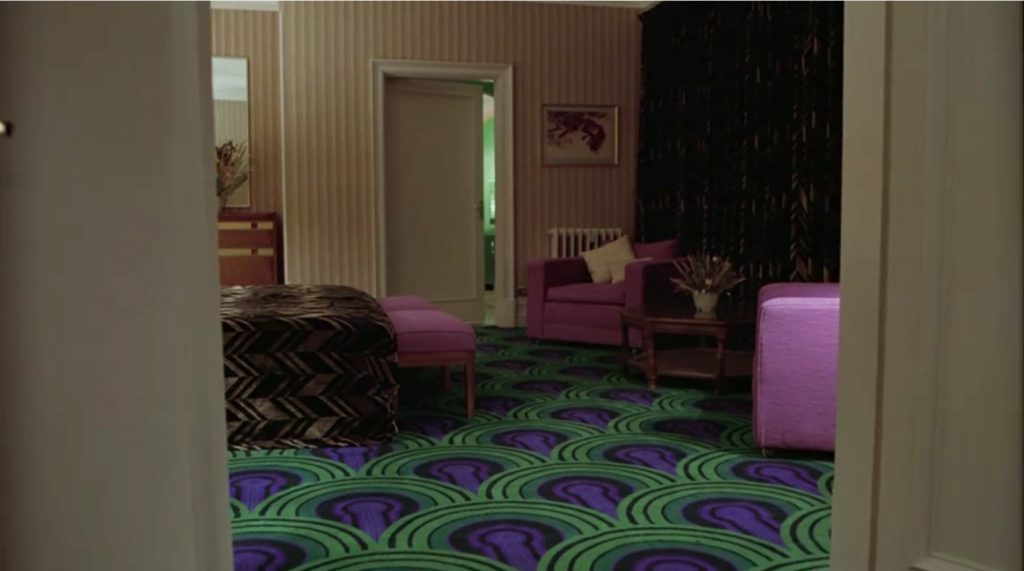
The views into Room 237 from the hall corridor outside suggest an interior geography of the room that doesn’t match its interior as seen in The Shining. Due to soundstage size limitations on Doctor Sleep, we had to create a hallway that opened to Room 237, but the actual suite was constructed on another stage on the lot at Black Hall Studios, Atlanta.
There were many technical challenges in attempting to remake The Overlook for Doctor Sleep which were equally daunting and rewarding:
We had to conduct a thorough analysis of virtually every shot of The Shining. There was a young researcher on staff in the Art Department, who, long prior to my arrival, had made an archive of screen stills, which would become our research bible.
-

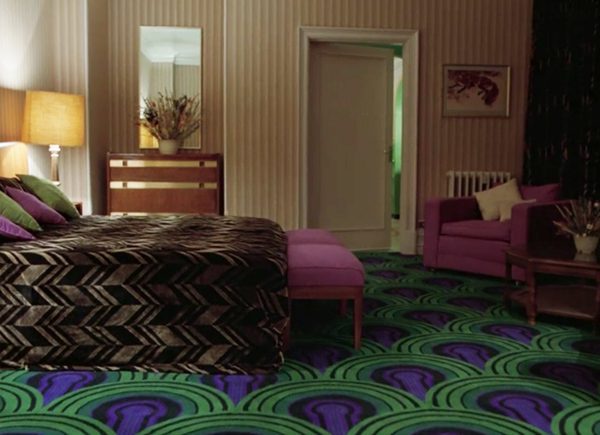
Room 237 luxury carpet as seen in The Shining Overlook Hotel
As seen in:Film and Furniture
Director: Stanley Kubrick
Shop NowWe are thrilled to present the bold purple and green carpet as seen in Room 237 in The Shining’s Overlook Hotel. Now available as beautifully crafted, luxury rugs, runners and wall-to-wall carpet for your own home.
Although the story is situated in US, we were trying to match designs that were done in UK forty years prior. Some details such as electrical outlets were UK-specific and required hunting down. There were occasional odd bits, such as a box, mounted to the wall in a corridor for which we could find no identifiable use, so we merely replicated its shape and proportion. All we do is in the service of photography, so in taking extraordinary measures to match its predecessor we sometimes faked it. If it looked good in a photograph, and closely approximated the original, we were happy. Consider that all of the original film was done prior to the digital age. Today our décor work is meticulously archived for digital preservation. No such records existed of wallpaper or textile selections.
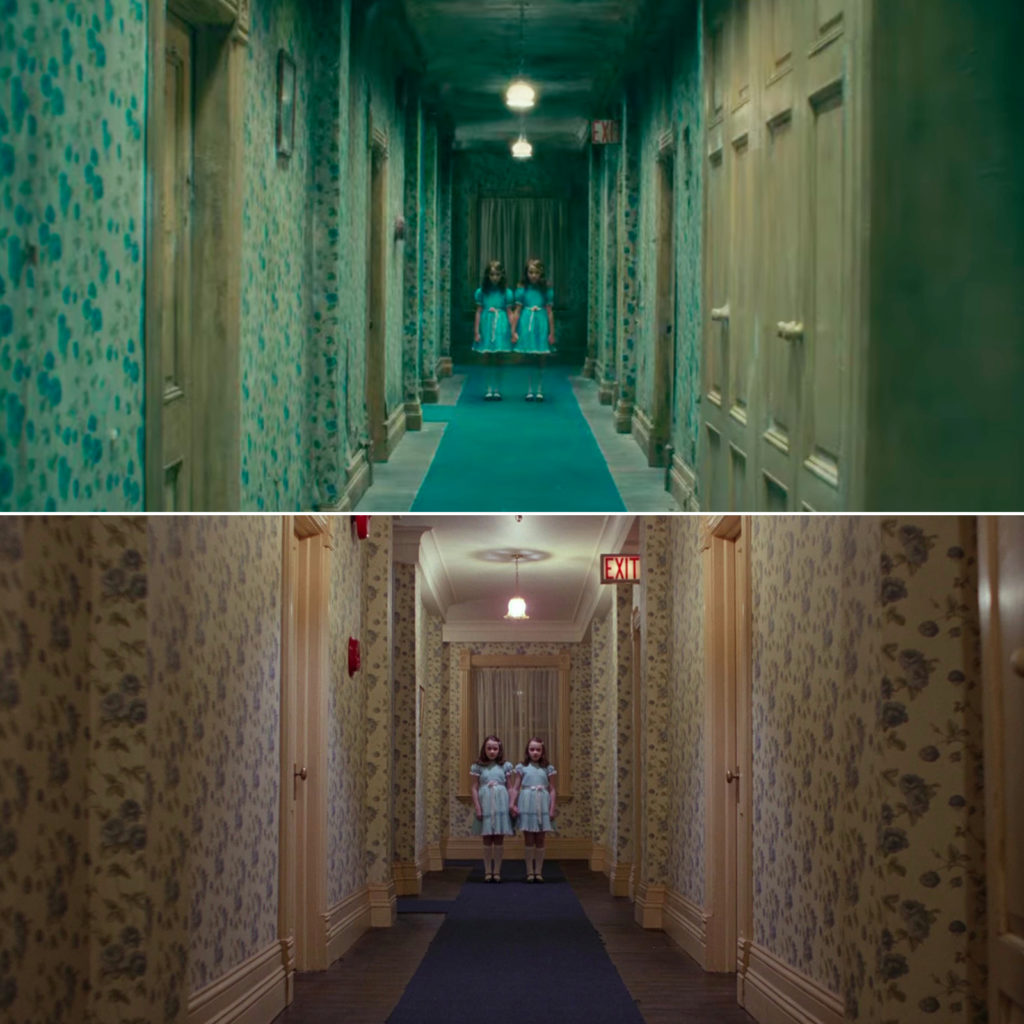
The Director’s expectation was that our version of the Overlook, in terms of its proportions, its geography, and its lighting, match, virtually seamlessly, with the original. This expectation was further exacerbated by the arrival of a squad of bloggers, to whom he gave a secret tour of the unfinished set, touting the exacting standards that had been applied to replicating the original. By the time we began filming, the Director used to walk through the set with shots of The Shining loaded onto his laptop to compare the two versions. Spatial relationships between objects are necessarily distorted via photography, so one can imagine the thrill of being admonished that a chandelier was too far to the left or that a chair was positioned incorrectly.
There were scenes in Doctor Sleep which flashed back to the Overlook in its pristine form, and others which portrayed it in its state of dereliction. We had discussions about what level of neglect the hotel may have suffered, tried to imagine scenarios of squatters inhabiting rooms or the sorts of water or fire damages which may have been sustained over time. Had there been a caretaker whose job it was to maintain the structure? The decision was made that the most derelict spaces would be those seen when adult Dan (Ewan MacGregor) enters the space, and that as he proceeds deeper into its core (and ultimately Room 237) that its original condition remain more intact. This was motivated by the suggestion that the hotel awakens from a state of psychic hibernation upon Dan’s arrival.
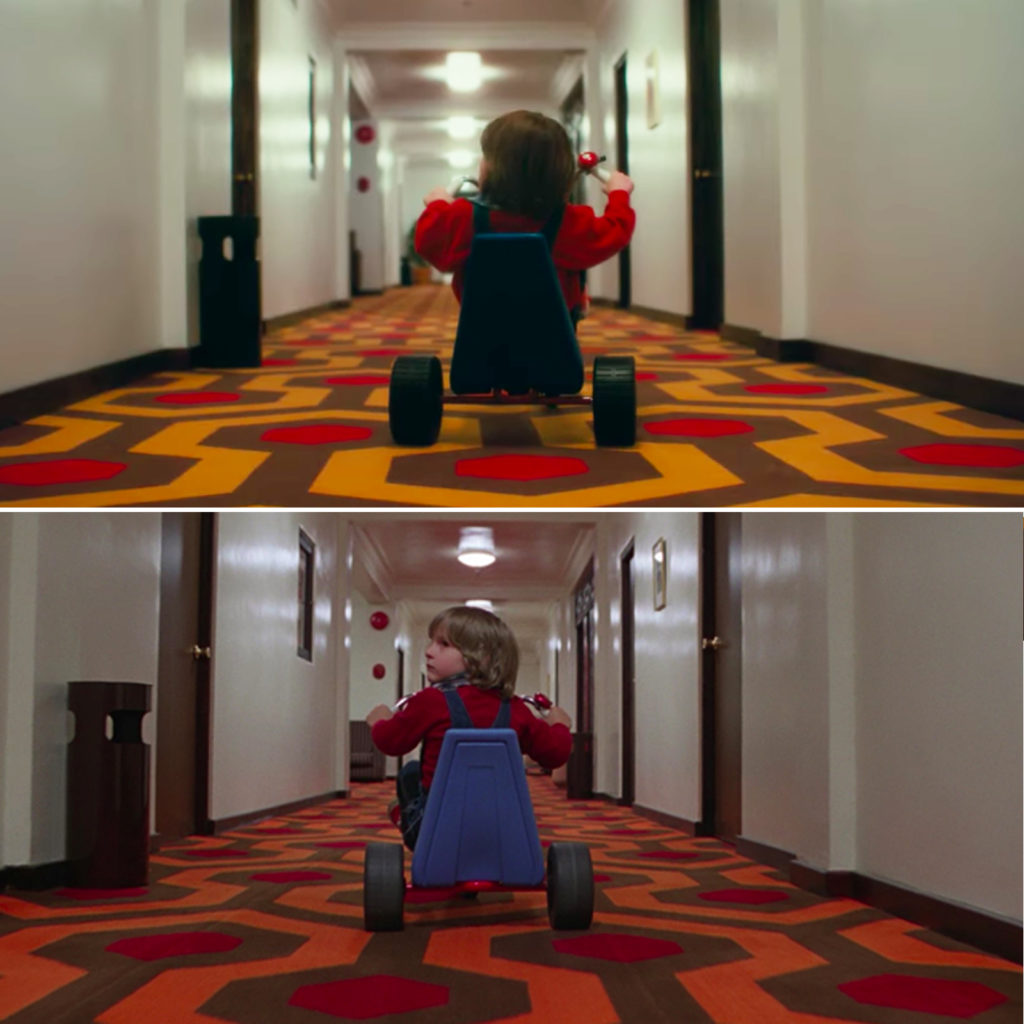
The furniture and décor details of Room 237
The most unique feature of this job was the subjugation of my own aesthetic critical criteria to the fidelity of replicating a past that was preserved on one film. I received a monumental degree of assistance from our excellent Graphic Artist, John Pundt, who analysed and built graphic files for patterns not only of the iconic David Hicks Hicks Hexagon carpet for miles of corridor, but the peacock pattern carpet in Room 237, along with the chevron patterned bedding and drapes. John had a fabulous large format printer in-house, which enabled us to print the chevron textile in quantities to fabricate the bedspread and the wall of drapes. John also built files for and printed all of the wallpapers in The Overlook. Having this luxury enabled us to print various iterations for camera tests while still in preproduction.
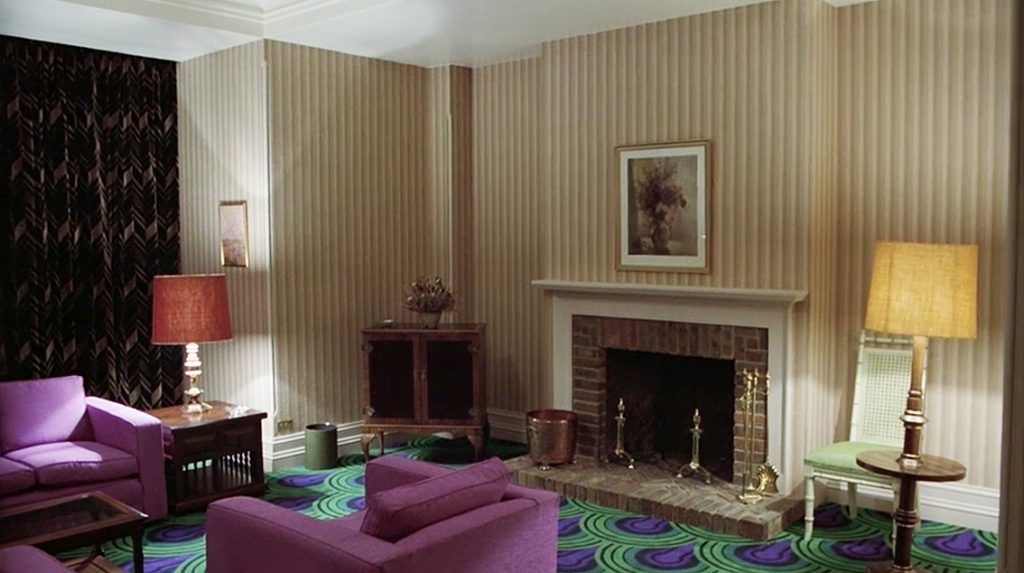
We shopped for samples of magenta and pink, and lavender and teal textiles to camera test alongside our samples of the peacock deco carpet, the striped wallpaper, and the chevron bedding and drapes to get a sense of which colors needed to be dialed up, and which needed to be dialed down. The styles in that suite that lead from the sitting room, up a couple steps to the bedroom, and then into the mint green bathroom are an audacious marriage of the sensational with the banal, and it felt a bit like conjuring and inhabiting the spirit of the team of excellent craftspeople who preceded us.
It’s quite a sophisticated balance — my comprehension of its sublime quality occurred gradually as my fidelity to its recreation took up residence in my bones. This is the nature of Set Decoration: one develops a passion bordering on obsession about a particular thing to which one may have previously been blinded. It’s a strange pathology, and, as I’m susceptible to it, I try to find projects that feed the obsession well.
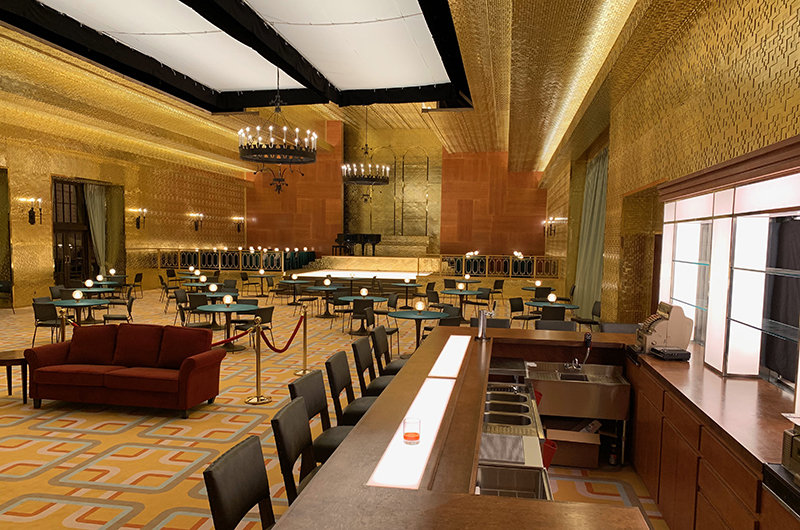
Doctor Sleep was a rigorous balancing act. We hadn’t the financial resources to fabricate everything, so we relied a great deal on Set Dec team members sourcing pieces that bore a resemblance to originals in silhouette and finish, and then we would fabricate details to bring the match closer. For example in the bedroom suite of Room 237, there is a small dresser with brass panels. We found a used wood dresser that seemed proportionally similar, and fabricated the brass panels to match the original. We sourced some chinois chairs for the bedroom and sitting room, reupholstered the seats and had them painted to resemble the originals. Once we settled on a pink textile that most closely approximated the originals, we found vintage pieces for the sitting room, and the sitting area of the bedroom, and had them reupholstered. We sourced vintage end tables that approximated the proportions of the originals and then modified them by manufacturing spindle supports to match.
The most famous ensuite bathroom
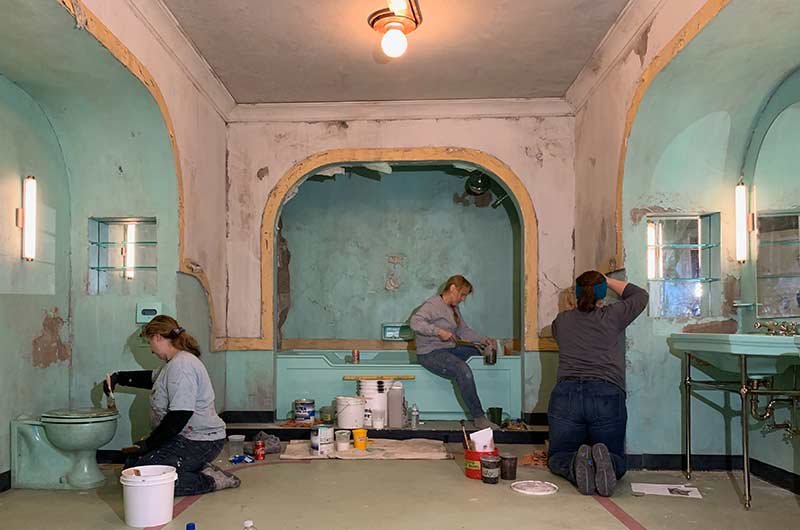
I decided to have the bathtub fabricated – as its design and proportions to fit the room were unique. The sinks and bathroom fixtures were sourced from Signature Hardware, the toilet from Addison’s in Toronto, Canada (no longer open), the bidet from Bauer Brosinc, bathroom fixtures from Period Bath and sconces from Restoration Hardware.
We analysed the bathroom ceiling light fixture, and designed a 3-layered, concentric-shaped plexiglass canopy that mimicked the original which mounted flush to ceiling. We did lots of colour testing, as we were using a digital camera which skewed blue, and LED light sources (rather than incandescent and fluorescent bulbs which would have been prevalent in The Shining era), so in many cases colours were dialed several degrees in opposing direction to compensate for camera distortions. We did a particularly gruelling test of how deeply we might mitigate (with paint) glass light shades that had been left derelict for 40 years. The cinematographer examined perhaps a dozen samples before he settled on a level that he felt best accommodated the photography, and that sample became the template for all the other paint ageing that followed.
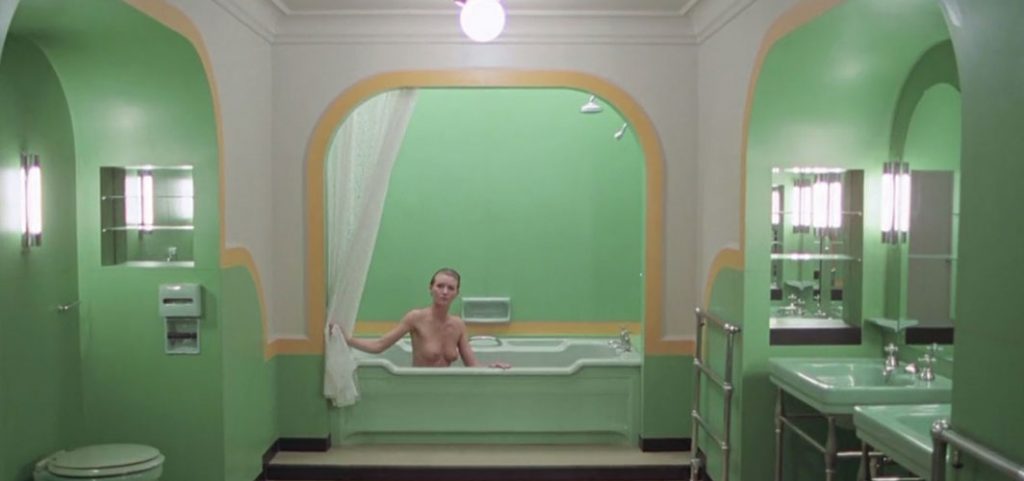
Trying to recreate a space with a high degree of verisimilitude, limited resources, and a ticking clock is a challenge that requires a deeply committed, high-functioning team. I’m fortunate to have some of the best set dressers, propmakers, drapers and upholsterers, who often travel with me from show to show. Regardless of the film’s outcome, the ultimate reward is standing there with one’s team, surveying the finished set and quietly acknowledging it’s a job well-done.
Thanks Gene for your incredible insights into the process of recreating the Overlook.

You can buy officially licensed, high quality Hicks Hexagon as well as Room 237 “The Shining” carpet, rugs and runners in The Shining section of our store. We supply to clients around the world.
Read more about why Hicks Hexagon carpet was chosen for The Shining in our feature Checkmate! The story behind Kubrick’s carpet in The Shining revealed.




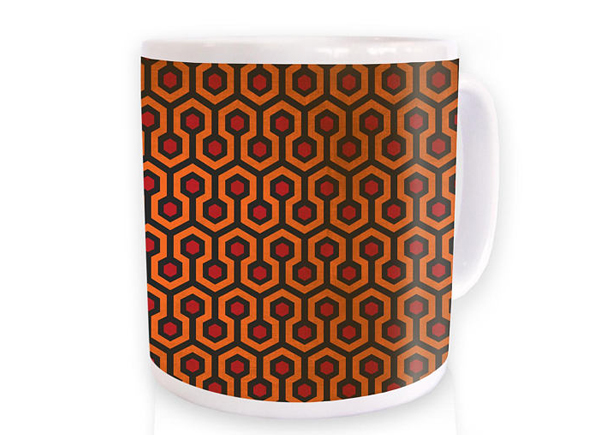
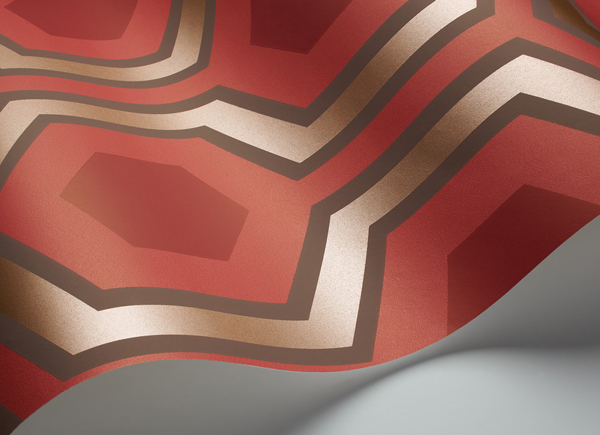
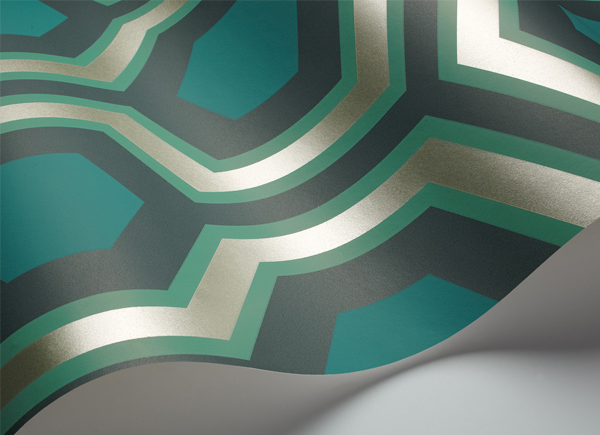
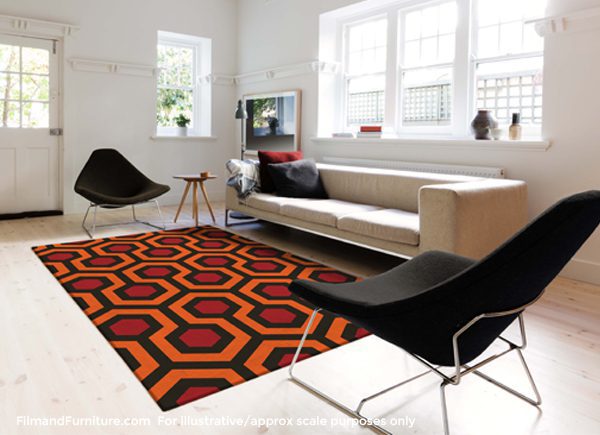



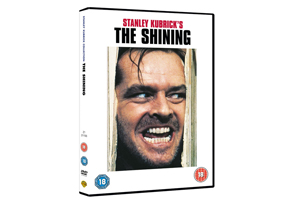

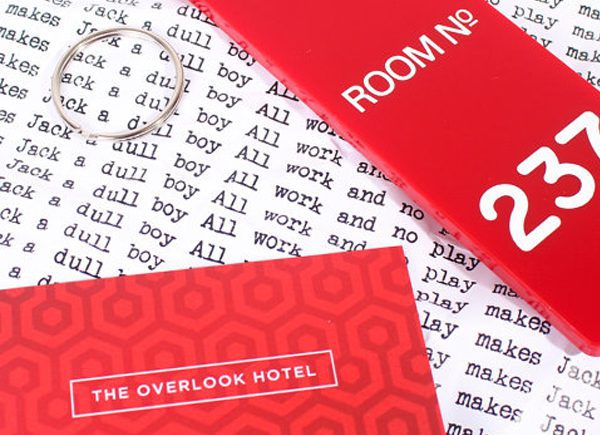
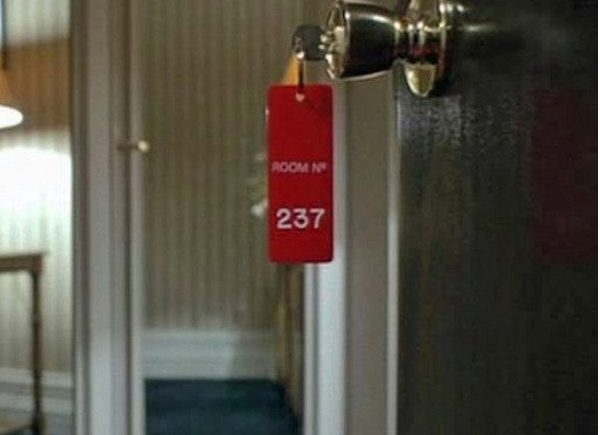



 Facebook
Facebook Twitter
Twitter Instagram
Instagram Pinterest
Pinterest RSS
RSS